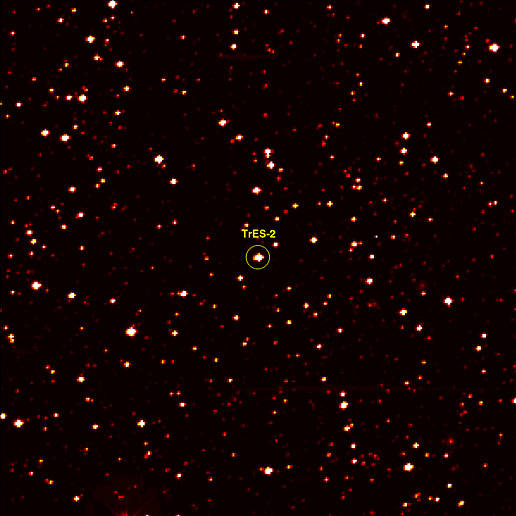This image zooms into a small portion of Kepler’s full field of view – an expansive, 100-square-degree patch of sky in our Milky Way galaxy. At the center of the field is a star with a known “hot Jupiter” planet, named “TrES-2,” zipping closely around it every 2.5 days. Kepler will observe TrES-2 and other known planets as a test to demonstrate that it is working properly, and to obtain new information about those planets.
The area pictured is one-thousandth of Kepler’s full field of view, and shows hundreds of stars at the very edge of the constellation Cygnus. The image has been color-coded so that brighter stars appear white, and fainter stars, red. It is a 60-second exposure, taken on April 8, 2009, one day after the spacecraft’s dust cover was jettisoned.
Kepler was designed to hunt for planets like Earth. The mission will spend the next three-and-a-half years staring at the same stars, looking for periodic dips in brightness. Such dips occur when planets cross in front of their stars from our point of view in the galaxy, partially blocking the starlight.
To achieve the level of precision needed to spot planets as small as Earth, Kepler’s images are intentionally blurred slightly. This minimizes the number of saturated stars. Saturation, or “blooming,” occurs when the brightest stars overload the individual pixels in the detectors, causing the signal to spill out into nearby pixels.
Image credit: NASA/Ames/JPL-Caltech› High resolution (TIF 8Mb)
2 min read
























